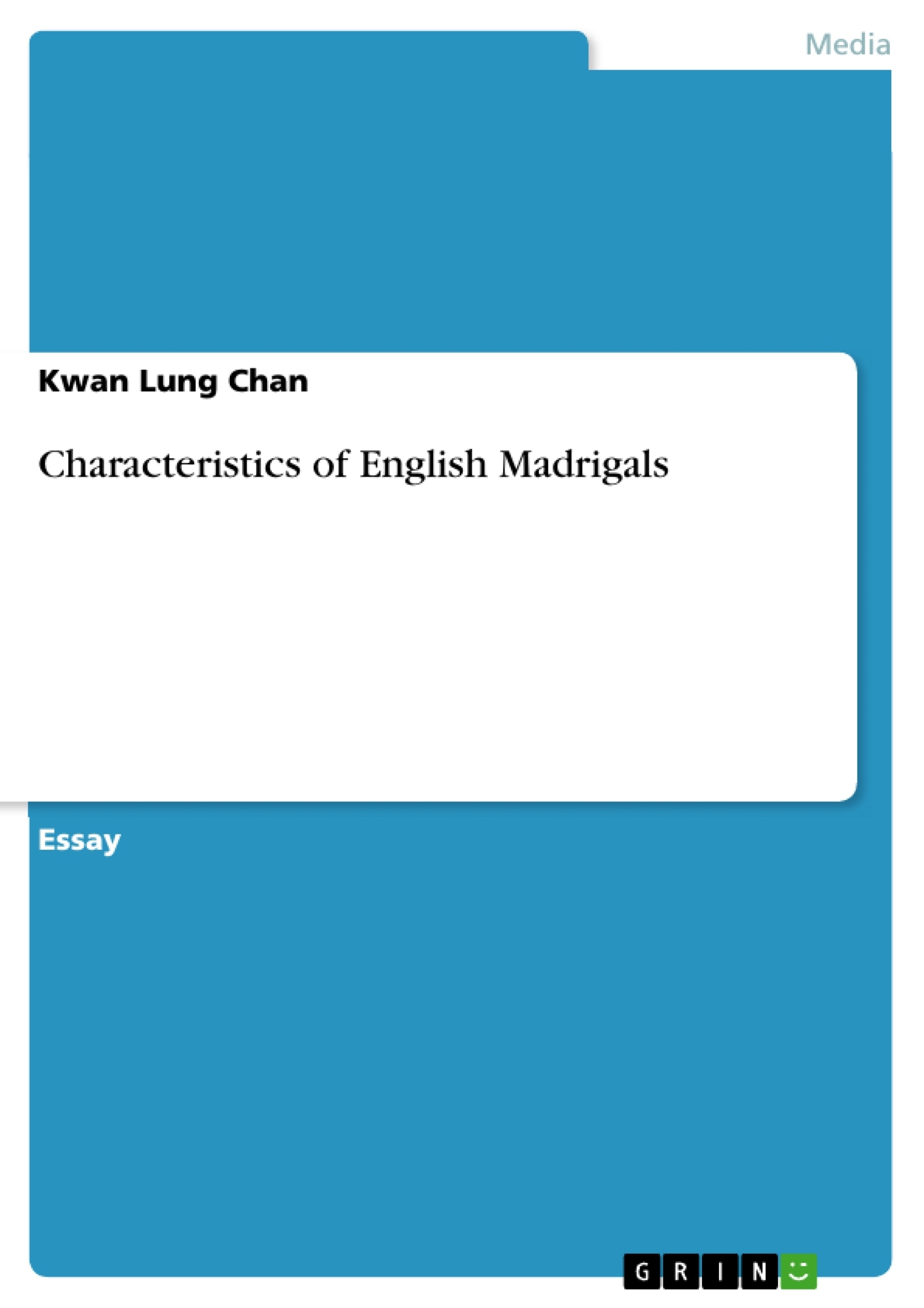English madrigals are sang in English. There are ample word painting just as that in 16th century Italian madrigals (Burkholder et al., 2010). However, unlike 16th century Italian madrigals that were tending towards polyphonic and then monody, English madrigals remained homophonic, which may be influenced by English part-songs (Whent, n.d.). Besides these, English madrigals can receive ample influence from Italian balletto and share many of its features.
Table of Contents
- a) Define 'madrigal'.
- 14th century Italian Trecento madrigals
- 16th century Italian renaissance madrigals
- English madrigals
- 2b) Discuss the characteristics of English madrigals by making reference to Morley's Sing We and Chant It.
Objectives and Key Themes
This lecture aims to provide a comprehensive definition of the term 'madrigal' and explore its different forms and characteristics throughout history. It examines the evolution of madrigals from the 14th century Italian Trecento to the 16th century Italian Renaissance and the subsequent development of English madrigals.
- Definition and evolution of the madrigal
- Characteristics of 14th century Italian Trecento madrigals
- Characteristics of 16th century Italian Renaissance madrigals
- Characteristics of English madrigals
- Word painting and its application in madrigals
Chapter Summaries
- a) Define 'madrigal'. This section defines the term 'madrigal' and explores its different forms and historical development. It covers the 14th century Italian Trecento madrigals, 16th century Italian Renaissance madrigals, and English madrigals. The section examines their distinctive characteristics, including their musical structures, vocal arrangements, and textual influences.
- 2b) Discuss the characteristics of English madrigals by making reference to Morley's Sing We and Chant It. This section delves into the specific characteristics of English madrigals. It analyzes Morley's composition 'Sing We and Chant It', highlighting its word painting techniques, homophonic style, and influences from Italian balletto. The discussion also examines the role of 'fa-la-la' refrains and contrapuntal elements in English madrigals.
Keywords
The main keywords and focus topics of this text include madrigals, 14th century Italian Trecento, 16th century Italian Renaissance, English madrigals, word painting, homophony, polyphony, monody, balletto, 'fa-la-la' refrains, contrapuntal style, and musical imitation.
- Quote paper
- Bachelor of Education (Music) Kwan Lung Chan (Author), 2015, Characteristics of English Madrigals, Munich, GRIN Verlag, https://www.grin.com/document/448240




